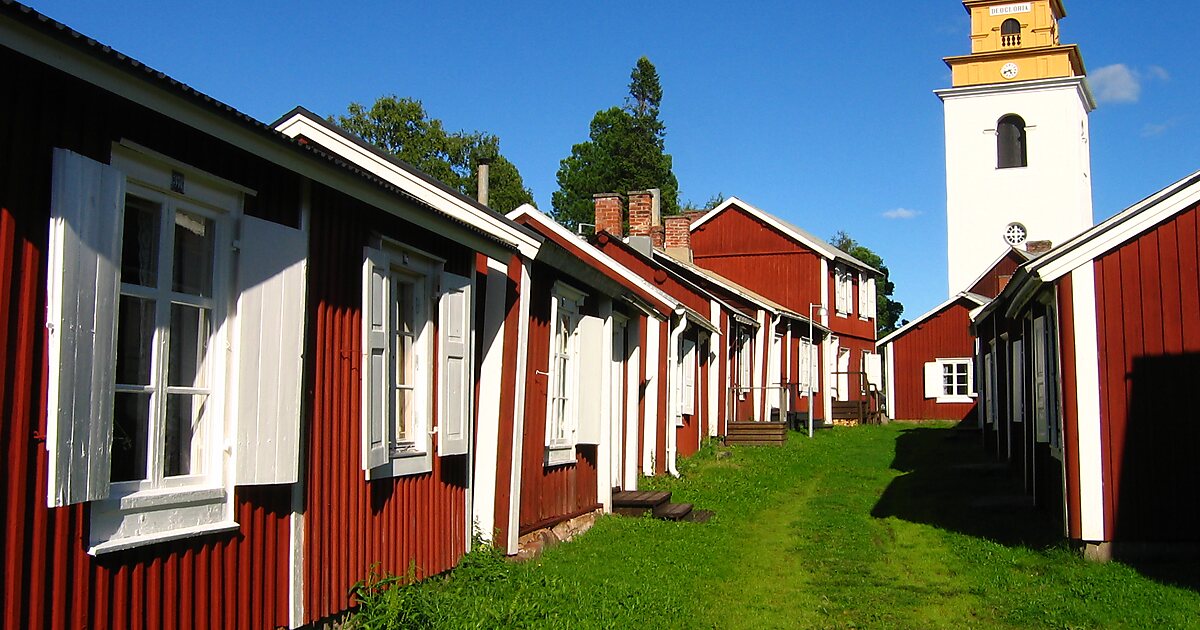The Gammelstad of Lulea - Virtual Tour 360 °

Gammelstaden is an urban area of Sweden located in the municipality of Luleå, county of Norrbotten.
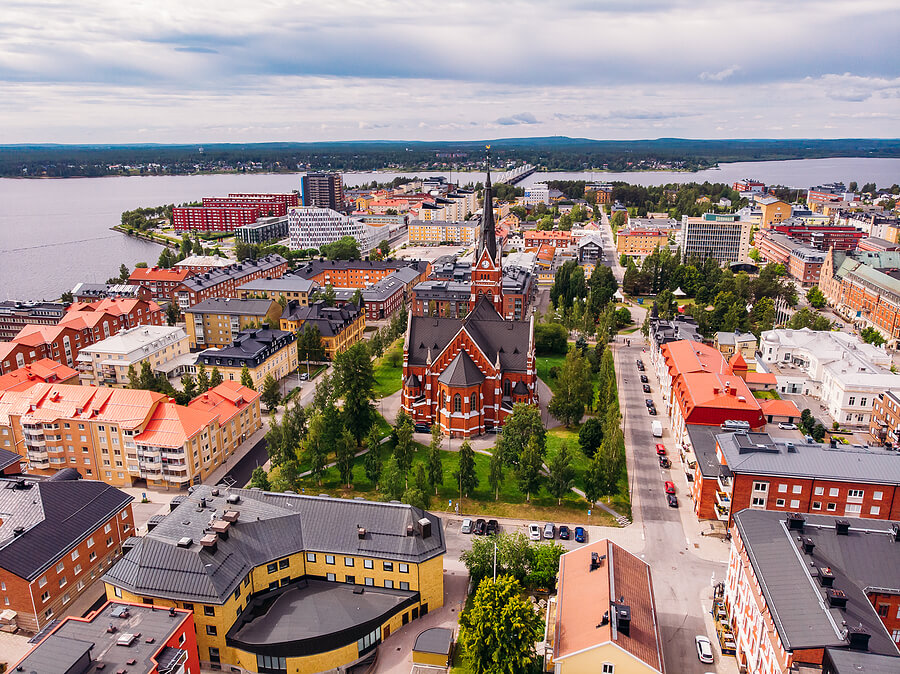
Lulea
In Sweden, just over 100 kilometers from the Finnish border, is the city of Lulea (Luleju in Northern Sami, Luulaja in Finnish). The city is the main center of Norrbotten County. It overlooks the sea and in front of it hosts the largest archipelago of brackish waters in the world with more than one thousand three hundred islands.
Lulea is the second largest city in northern Scandinavia (find out on Youtube). But not only. It is also a lively center for academic research, technological innovation (click to see a video) and mining.
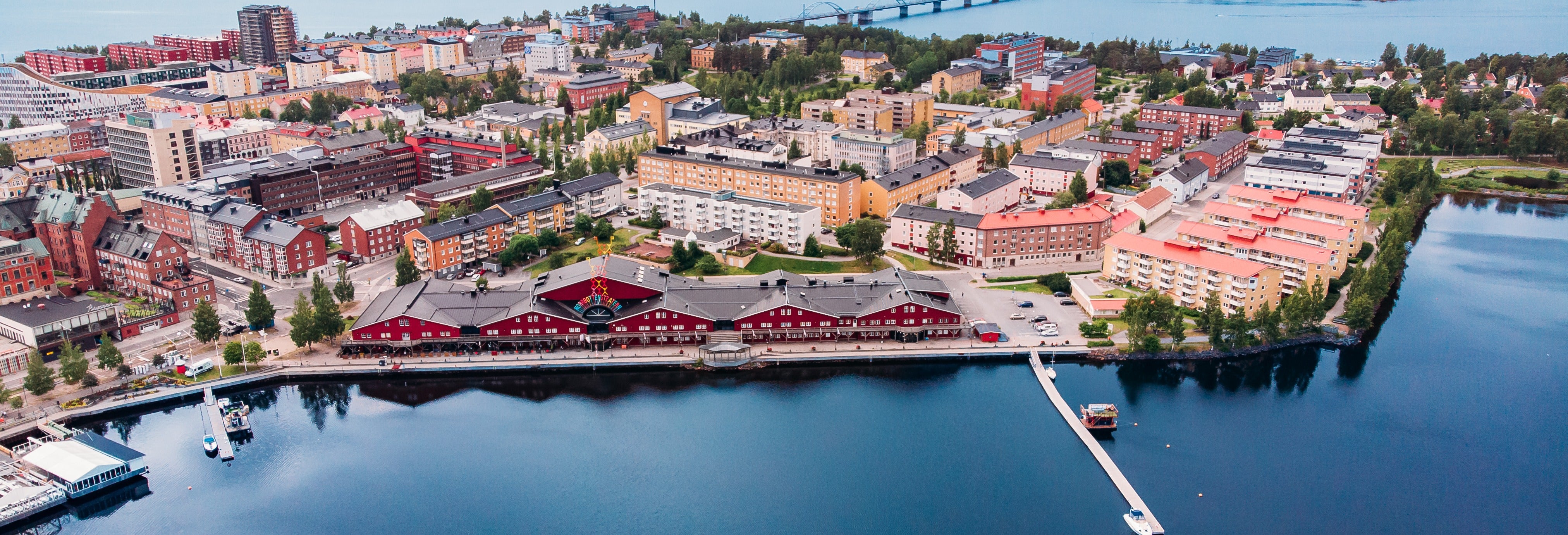
Geeks and miners? Not exactly. The heart of Lulea beats lively behind the double port of the city, in its parks and clubs. But Lulea also has an ancient heart, that of the seventeenth-century Gammelstad.
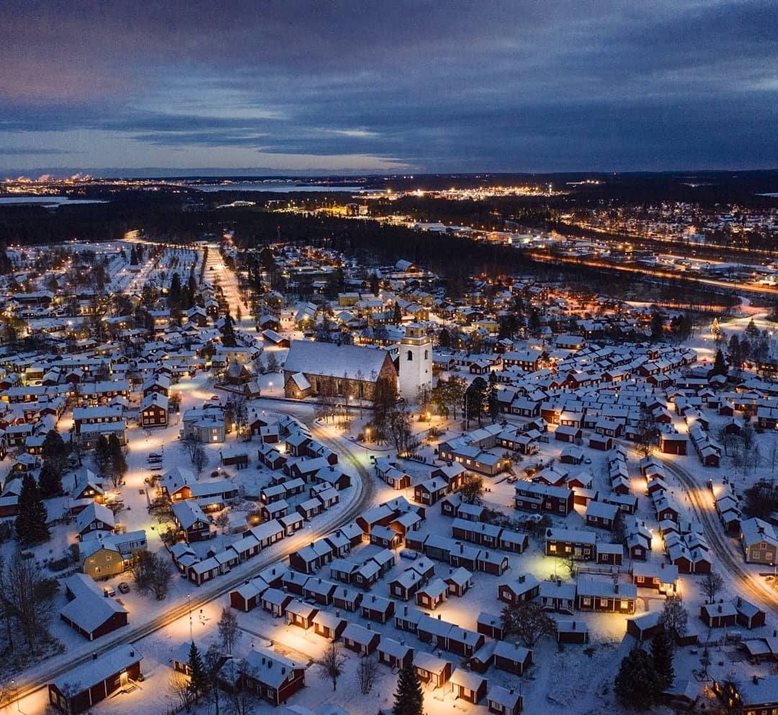
The "Gammelstad"
In the heart of Swedish Lapland lies one of those places that are as beautiful as they are rare. It is one of those places, not to be missed, that makes you discover the pleasure of small things. It takes you back centuries, and inebriates you with those colors and scents that know of a history that has now passed for at least four hundred years.

Gammelstad (literally "old city") Church Town is the perfect example of how the adaptation of traditional urban planning can also take place, in a hostile natural environment, to particular geographical and climatic conditions.
With this motivation, in 1996, Unesco declared Gammelstad a World Heritage Site.
When you arrive near Gammelstad and see, from afar, that the horizon is tinged with the red of the buildings and the white of the doors and windows, it means that you have finally arrived in this village of other times.
In this strip of Northern Scandinavia, after all, even a simple walk of at least two hours can be something truly unique, getting lost in the narrow streets of this “open-air museum”, scrutinizing the more than four hundred houses.
The parish village of Gammelstad was initially built as a small commercial settlement. But it soon became the fulcrum of religious services for the agricultural communities of the region.
The Gammelstad rises around the large medieval church, where the parish house and the granary are also located. The village consists of 424 colored red wooden houses (for a total of 555 rooms) and is the largest and best preserved parish village in Sweden.
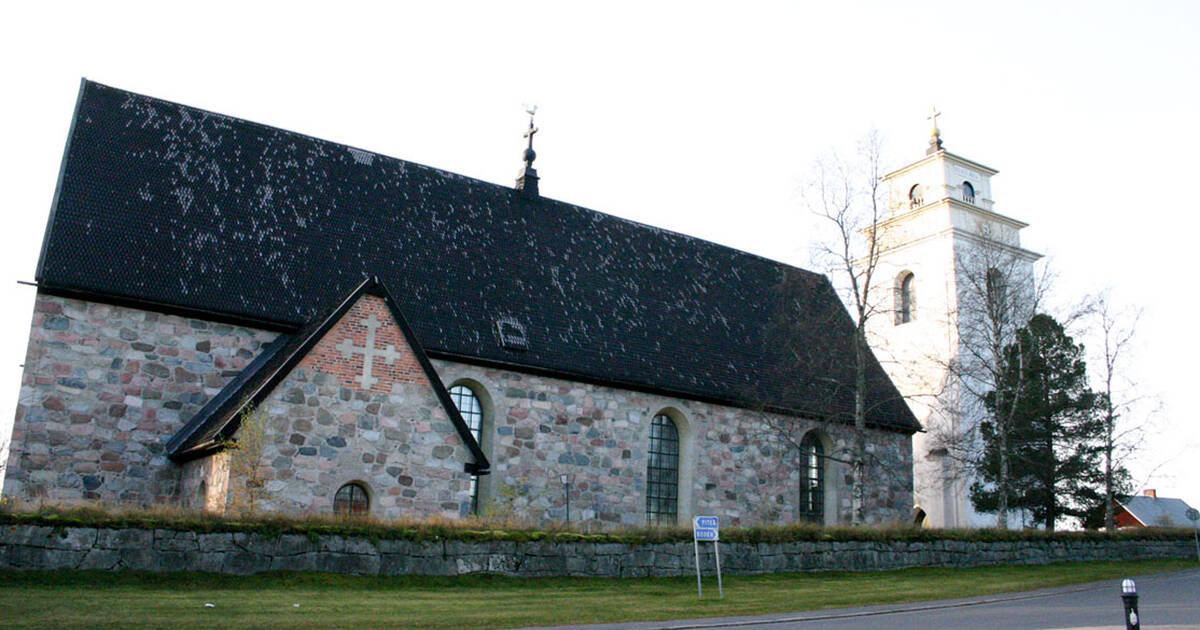
Examples of parish villages, such as that of Gammelstad, spread especially in the north of Sweden due to the presence of very large and faithful parishes that had to live with difficult geographical and climatic conditions.
Two factors, which prompted the religious to build their villages around the church to welcome pilgrims during the night and to create real reception and prayer centers.

In that historical period, moreover, Swedish law obliged a constant attendance of the church and everyone was required to strictly respect it: "If the farmer lived 10 kilometers away, attendance was scheduled every weekend, if he lived 20 kilometers away every two weekends and so on. The further he went, the less frequently he had to go to church ”.
The construction of the medieval church began in 1492 and around it there were over 400 wooden houses that were used only on Sundays, during the main religious holidays, during markets and other local events. Until the end of the 1950s, the houses were not inhabited continuously, but were frequented almost exclusively on Sundays or on days when particular Christian holidays occurred. Today, however, the village has its own active community and is a beautiful example of an open-air museum that looks like a postcard in winter with the snow! (Watch a video).

Your position
The location of Gammelstad was one of the regions, for which a parochial and non-commercial type village developed on this site. In fact, starting from the 17th century, the port of the village of Gammelstad became completely unusable due to the continuous post-glacial process of the earth.
In that period, in fact, we witnessed the lowering of the waters of the ancient port concomitant with the raising of the land on which the village stands.

Gradually, therefore, it became more and more difficult for ships to enter and leave the port. Citizens, therefore, were forced to transfer maritime and commercial activities to the coast, effectively creating a new settlement which took the name of Luleå. While the previous village was baptized, precisely, Gammelstad.
The shift of commercial activity towards the sea, therefore, was one of the fortunes of the parish village. If it has remained intact over the centuries, in fact, it is also due to this decentralized position which made it immune to subsequent industrialization in the nineteenth century that affected the entire region.
The itinerary
The visit of Gammelstad can only start from the Visitor Center, where the tourist can find everything he needs for a brief knowledge of the village and all the possible attractions and activities.
Inside there are some brochures and some maps. On the second floor, however, it is possible to visit a historical exhibition of Gammelstad. Admission to the exhibition is free.

In Gammelstad there are more than 400 log cabins, six stables and a barn and another hundred buildings.
The red houses are small and not very tall. Most of them can accommodate one or two rooms. There are very few houses that have two floors as they have the ability to accommodate more rooms.
Strolling from street to street, the wooden houses might look identical. After all, the differences are really minimal from house to house and mostly related to size, height, roof or some details that, with the naked eye, could really go unnoticed.
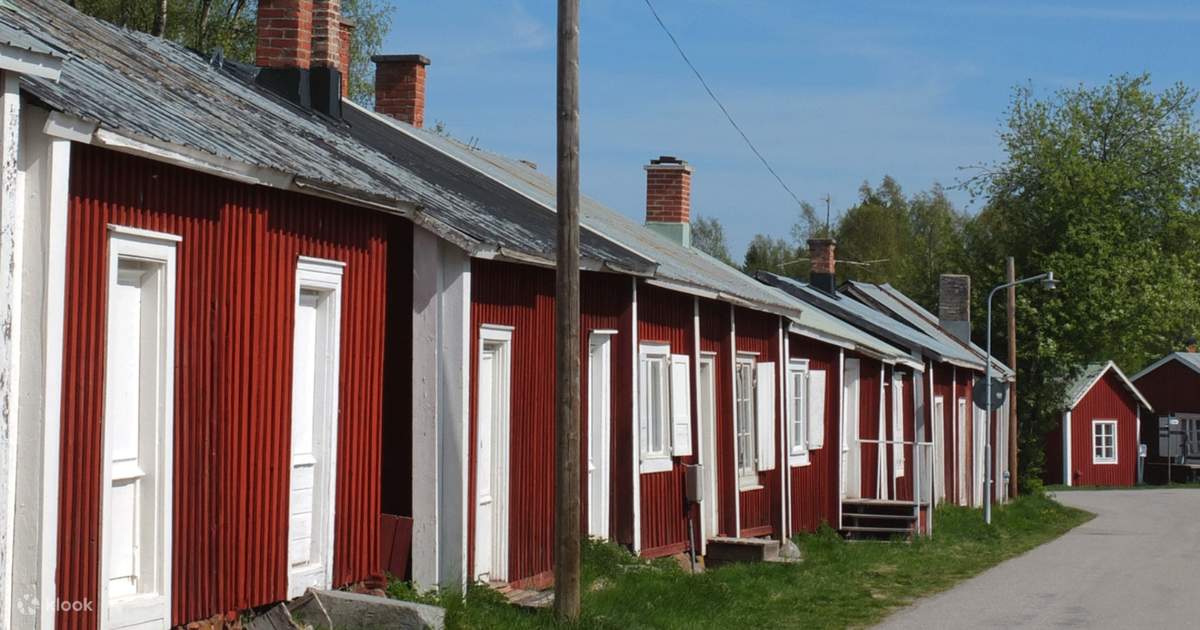
Occasionally along the itinerary, you may come across some larger buildings. Historically they were those that were assigned to officials or traders who lived here all year round.
Among the buildings, which may draw your attention, are the Guest House, Bethel Chapel, the Mayor's Residence, the Separatists' Cottage and the Captain's Residence.

Today, the houses are privately owned and periodically the owners and other faithful meet to observe religious services, small markets or cultural activities. Some cottages in the village, however, are owned by the Nederluleå Historical Association which, there, has opened the cottages to the public in a sort of small exhibition museum.
Inside there is the characteristic furniture of the time, some traditional clothes and many other objects, which offer a wonderful opportunity to discover how the cottages looked from the inside. Click to take a look at the interior.
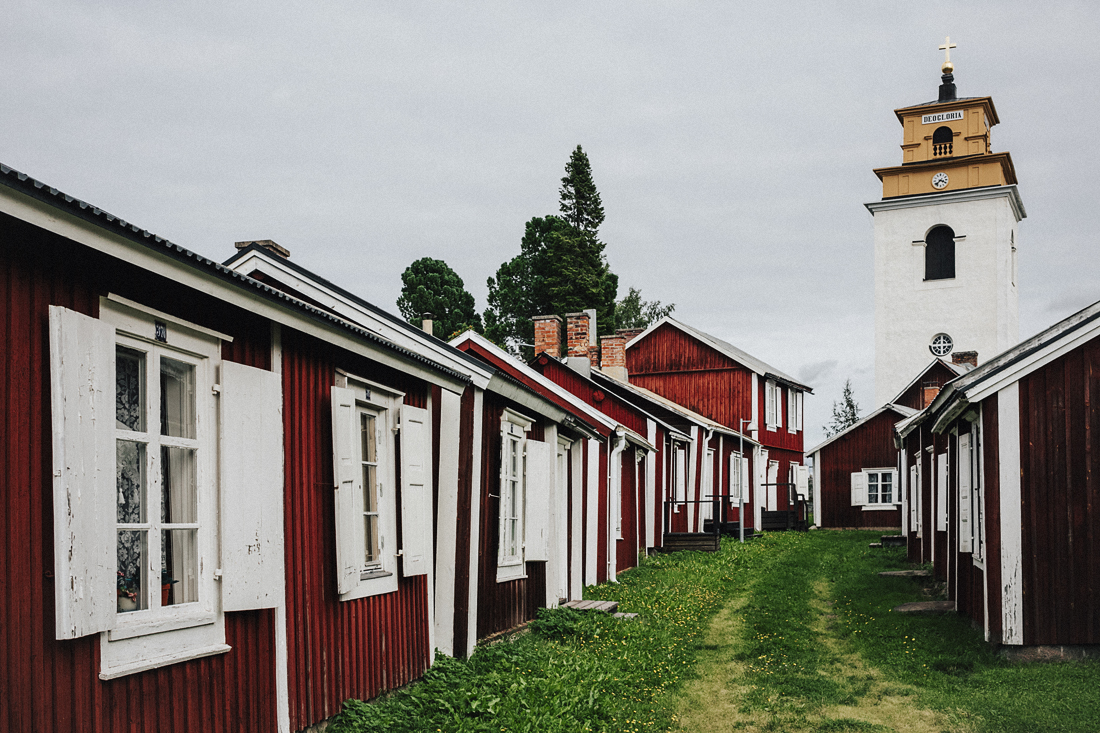
Continuing along the itinerary, passing from cottage to cottage, you can get to the Church of Nederluleå: the largest medieval church in northern Sweden.
The church, which stands on an ancient wooden chapel, is built entirely of natural stone of about fourty different types, with brick fixtures and decorations. It dates back to the 15th century and was inaugurated in 1492 by Archbishop Jacob Ulfsson.

Inside the church, there is a presbytery that highlights the paintings dating back to the beginning of the sixteenth century, which were probably made by the school of Albertus Pictor. The altarpiece, on the other hand, was made in 1520 in Antwerp, and tells of the Passion of Christ. Other elements that characterize this place are the late medieval crucifix and the baptismal font entirely in marble.
The wooden pulpit dates back to 1712 and was made and sculpted by Nils Fluur, while the sculptures were added in 1745. The church organ, on the other hand, has 4,200 pipes and was built by the Grönlund Organ Palace.
The current bell tower, adjacent to the church, was commissioned to a local architect, Erik Hollström, by the villagers. It was built between 1849 and 1952. It is impressive with its 39 meters, entirely made (inside) with natural stone with slatted bricks, plastered and with a wooden and metal roof.
Several cracks within the church structure, the surrounding wall and its position indicate that, in the past, the building was also used as a defensive structure to control the surrounding area up to the port.
Adjacent to the church there are also the Parish House and the Granary of the Tithes.

Near Gammelstad is the Hägnan Open Air Museum. An open-air museum that shows what life was like in a coastal village in this region between the eighteenth and twentieth centuries.
The museum is run by guides in period costume and houses buildings from all over Swedish Lapland and a small farm where you can find pigs, goats, rabbits and chickens.

Gammelstad and some of its appointments
The second weekend of Advent is the Christmas market. It is one of the most charming in Sweden. Along the streets of the village you can see some examples of local crafts, delicious homemade sweets, Santa Claus while entertaining the children or you can get on fantastic horse-drawn sleighs.

As if in magic, the windows of the cottages light up with hundreds of candles and the streets are filled with a thousand scents. Click to see a nice video of the Christmas period
But the surprises, in these parts, are never lacking, especially if you arrive ... "her Majesty" 'the Northern Lights! And then everything seems magically divine in that fantastic riot of colors that will not be forgotten so quickly.

In summer, however, during the longest day of the year, the midsummer celebrations take place. It is a day full of events and full of traditional activities, including decorating and raising the Maypole, lessons in bread making and crafts, many dances and games, jumps in the haystack and many other activities that always attract a great crowd.

How to get to Gammelstad
By car. the village is easily accessible. The village is about ten kilometers from the center of Lulea and can be reached in just a few minutes by first following Route 94 and then Route 97.
Alternatively, you can get there by public transport (LLT website). Buses depart from Lulea's Smedjegatan station. There are three lines:
- Bus 9 towards Kyrkbyn which goes directly to the parish village. Stop: Kyrktorget ..
- Bus 1 or 2 towards Sunderbysjukhus. Stop: Stadsöcentrum. From here continue on foot for one kilometer to the village following the signs for Kyrkbyn.

"Gammelstad 360"
Gammelstad 360 allows you to magically discover this parish village from the comfort of your home.
Its map is completely interactive, showing historical photographs, videos and lots of information on the various areas of the village.
Video: The Gammelstad of Lulea - Virtual Tour 360 °
Map: The Gammelstad of Lulea - Virtual Tour 360 °
Address: Kyrktorget 1, 954 33, Gammelstad
Lulea (Svezia)
Latitude: 65.6446917
Longitude: 22.0314032
Site: https://www.visitgammelstad.se...
vCard created by: Marco Cadelli
Currently owned by: Marco Cadelli
Type: Square
Function: Historic village
Creation date: 18-04-2022 05:53
Last update: 30/11/2022
